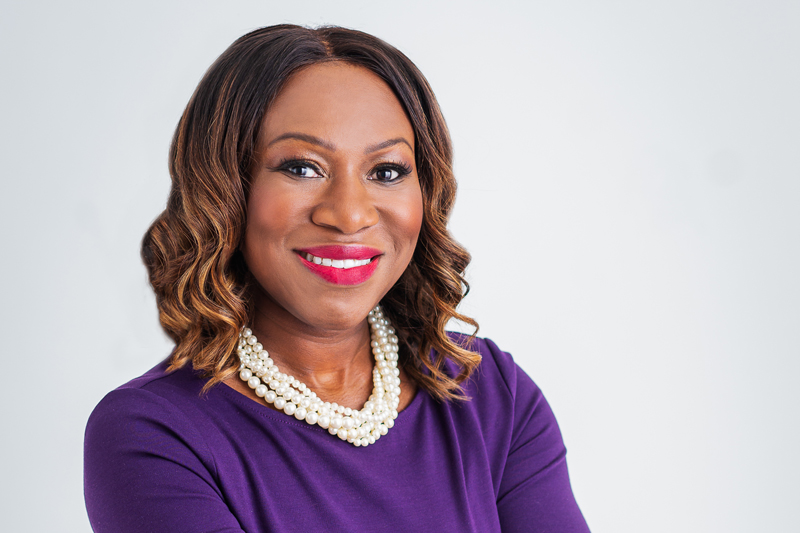News

Shaping a Powerful and Diverse Future
By Sherina Maye Edwards
As a young woman of color, it is not always easy to be a leader in an industry with an aging, male dominated and largely non-diverse workforce. Back when I was first appointed as a Commissioner at the Illinois Commerce Commission, it didn’t take me long to discover that my commitment to diversity and inclusion would continuously merit special time and attention.
The energy sector remains one of the least gender and racially diverse sectors in the economy, despite efforts to promote and encourage women and minorities’ participation. Both women and minorities face structural and cultural challenges and the lack of these two groups in leadership positions in the energy space compounds the difficulty in recruiting and retaining diverse leaders. This is especially important given the role that diversity can often play as key drivers of innovative and inclusive solutions. As such, gender and racial diversity and the broad participation of women and minorities in the energy sector are needed for a successful energy future.
While social justice typically is the initial impetus behind these efforts, companies have increasingly begun to regard inclusion and diversity as a source of competitive advantage, and specifically as a key enabler of growth. Yet progress on diversification initiatives have been slow. And companies are still uncertain about how they can most effectively use diversity and inclusion to support their growth and value-creation goals.
We know intuitively that diversity matters. It’s also increasingly clear that it makes sense in purely business terms. Research consistently shows that companies in the top quartile for gender or racial and ethnic diversity are more likely to have financial returns above their national industry medians. Companies in the bottom quartile in these dimensions are statistically less likely to achieve above-average returns. And diversity is probably a competitive differentiator that shifts market share toward more diverse companies over time.
This correlation indicates that when companies commit themselves to diverse leadership, they are more successful. More diverse companies are better able to win top talent and improve their customer orientation, employee satisfaction, and decision making, and all that leads to a virtuous cycle of increasing returns. This in turn suggests that other kinds of diversity—for example, in age, sexual orientation, and experience (such as a global mind-set and cultural fluency)—are also likely to bring some level of competitive advantage for companies that can attract and retain such diverse talent.
I’m not suggesting that achieving greater diversity is easy. Women—accounting for an average of just 16 percent of the members of executive teams in the United States—remain underrepresented at the top of corporations globally.
Most organizations must do more to take full advantage of the opportunity that diverse leadership teams represent. That’s particularly true for their talent pipelines: attracting, developing, mentoring, sponsoring, and retaining the next generations of global leaders at all levels of organizations.
The same efforts regarding a diverse workforce in energy should also be placed in encouraging and supporting diverse businesses in energy. There is strength, innovation, and prosperity to be found in embracing a wide range of thoughts, ideas, and perspectives. During my time as a regulator in Illinois, my fellow Commissioners and I required regulated utilities to report their diverse supplier procurement spend on an annual basis. The Illinois Commerce Commission supported the goal of greater access to utility procurement contracts for women-owned, minority-owned, veteran-owned, and small businesses. Utility spending with diverse suppliers has since increased tremendously and utilities in Illinois are continuously working to improve their diversity spend.
I believe that successfully embracing diversity as a business imperative requires that company leadership embrace diversity as a moral imperative. By removing barriers and impediments to market entry, we help emerging and developing businesses grow and expand. The resulting increase in competition will result in lower overall costs, which benefits utilities and the consumer. So again, diversity doesn’t just make sense, it makes dollars. The trickle-down positive effect of diversity gets even better: diverse procurement has a direct and positive economic impact on the communities where corporations do business, as diverse suppliers tend to hire more Black, Latino and other underrepresented employees than their counterparts. In addition, when diverse business owners do business with major institutions like utilities, they generate wealth, create jobs, and communities of color are overall better resourced to thrive and be successful.
From infrastructure modernization efforts to countless technological innovations changing the way we consume, generate and store energy, it’s certainly an exciting time to be a professional in the energy space. One thing is clear – the future of the energy industry relies on diversity. I am proud to work for a company that gets it and under my leadership we will certainly continue to move that needle forward at INTREN!
PUBLISHED October 01, 2020
CATEGORY Culture Diversity
TAGGED Sherina Maye Edwards